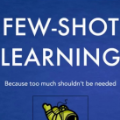Learning to recognize novel visual categories from a few examples is a challenging task for machines in real-world applications. In contrast, humans have the ability to discriminate even similar objects with little supervision. This paper attempts to address the few-shot fine-grained recognition problem. We propose a feature fusion model to explore the largest discriminative features by focusing on key regions. The model utilizes focus-area location to discover the perceptually similar regions among objects. High-order integration is employed to capture the interaction information among intra-parts. We also design a Center Neighbor Loss to form robust embedding space distribution for generating discriminative features. Furthermore, we build a typical fine-grained and few-shot learning dataset miniPPlankton from the real-world application in the area of marine ecological environment. Extensive experiments are carried out to validate the performance of our model. First, the model is evaluated with two challenging experiments based on the miniDogsNet and Caltech-UCSD public datasets. The results demonstrate that our model achieves competitive performance compared with state-of-the-art models. Then, we implement our model for the real-world phytoplankton recognition task. The experimental results show the superiority of the proposed model compared with others on the miniPPlankton dataset.
翻译:从几个例子中学习认识新视觉类别对于现实世界应用中的机器来说是一项艰巨的任务。 相比之下, 人类有能力在很少监督的情况下歧视相似的物体。 本文试图解决微小微粒微粒识别问题。 我们提出一个特效聚合模型, 以探索最大的歧视特征, 重点是关键区域。 模型利用焦点地区位置发现不同物体之间的感知相似区域。 高端集成用于捕捉部分内部的互动信息。 我们还设计了一个“ 邻里损失中心”, 以形成强大的嵌入空间分布, 从而产生歧视性特征。 此外, 我们从实际世界应用中建立一个典型的精细微和少发的学习数据集微型PPlankton。 进行广泛的实验, 以验证我们模型的性能。 首先, 以小型DogsNet 和 Caltech- UCSDSD公共数据集为基础的两个挑战性实验对模型进行了评估。 结果显示, 我们模型取得了与状态和艺术模型相比的竞争性空间分布。 然后, 我们用模型来比较我们真实世界模型的高级性模型。



























































































